Inverter A/Cs Are More Efficient And Comfortable
20 A/Cs Tested To Expose Clear Advantages Of Inverter Technology
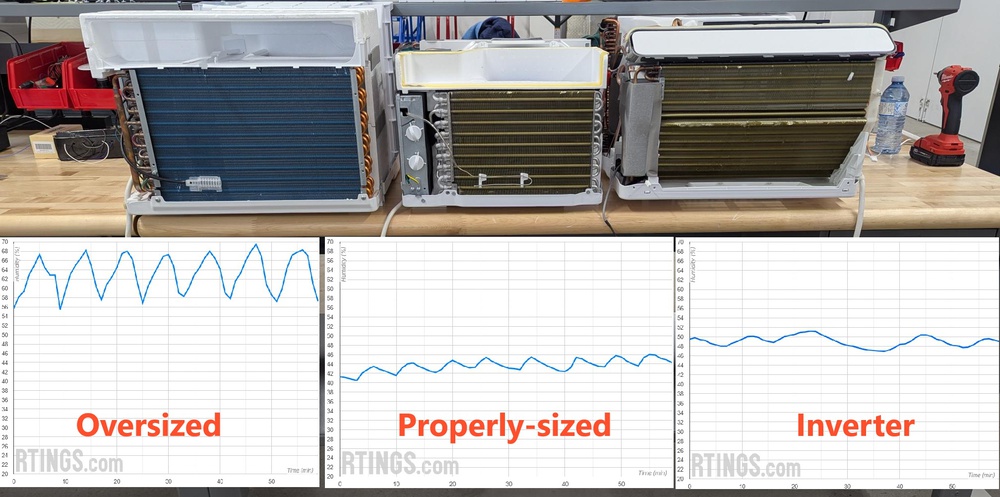
Air conditioners have been around for quite some time. For years, engineers have been improving and perfecting these systems by using newer technologies and more environmentally friendly refrigerants while improving efficiency to the point of near perfection.
Modern seasonal A/Cs have a closed refrigeration circuit that is optimized for high efficiency, low maintenance, and low cost. This means that any specific refrigerant is expected to have similar efficiency and efficacy to similarly sized A/Cs from pretty much any brand.
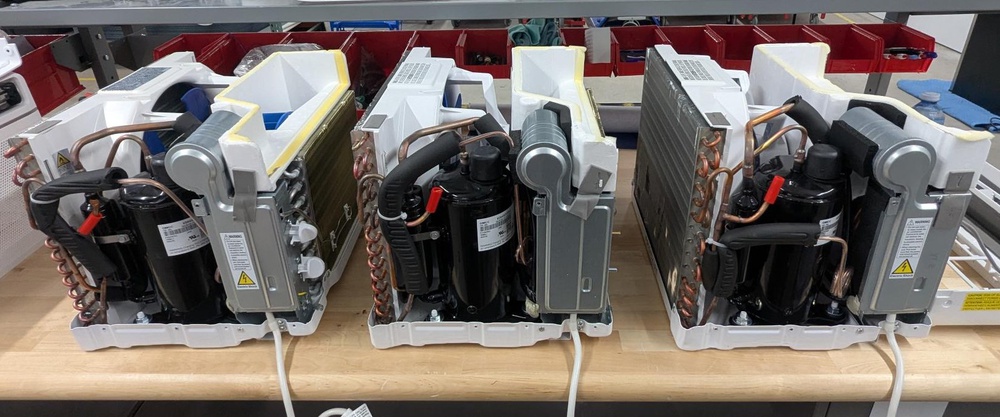
As such, brands have been exploring different ways to make their A/Cs stand out. One technology that has been maturing over the past several years is variable speed compressor, otherwise known as inverter technology. Unlike in some other home appliances (looking at you microwaves), this technology is actually highly effective in A/Cs.
Variable speed compressor technology, as the name implies, uses a compressor whose motor's speed can be controlled electronically. The "inverter" term refers to only one part of the system that controls the speed of the compressor. This term is now widely used by manufacturers to refer to this technology.
Properly Sizing Your A/C is Less Important Thanks to Mature Inverter Technology
We've all heard about the importance of properly sizing an A/C for the room you want to cool, as it ensures better temperature stability and, more significantly, lower humidity levels.
Why Inverter A/Cs are efficient even when oversized
Let's say you want to keep your bedroom at 21 °C during a hot, humid summer. Let's also assume that you need to exchange 5,000 BTU of energy every hour to maintain that temperature. This means that if you install a 5,000 BTU/h (non-inverter) window A/C in your bedroom, it will be able to maintain that 21 °C temperature without cycling off its compressor at all.
Now, if you instead install a 10,000 BTU/h (non-inverter) window A/C in the same bedroom, the compressor is expected to cycle off half of the time to keep a 21 °C temperature.
In the first scenario, since the compressor never cycles off, it will be dehumidifying non-stop, which also means that the humidity level will be kept very stable and at a minimum.
In the second scenario, humidity levels will shoot up whenever the compressor cycles off due to two main factors. The first is that there is a constant source of humidity in every room due to leakages and humidity trapped in furniture and walls. The second factor is that the evaporator coils cool down when the compressor is on, so they start condensing water from the air. When the compressor cycles off, however, these coils warm up and start evaporating the water they previously condensed, adding to the existing source of humidity in the room. Therefore, the higher the capacity of the A/C, the more pronounced this effect will be.
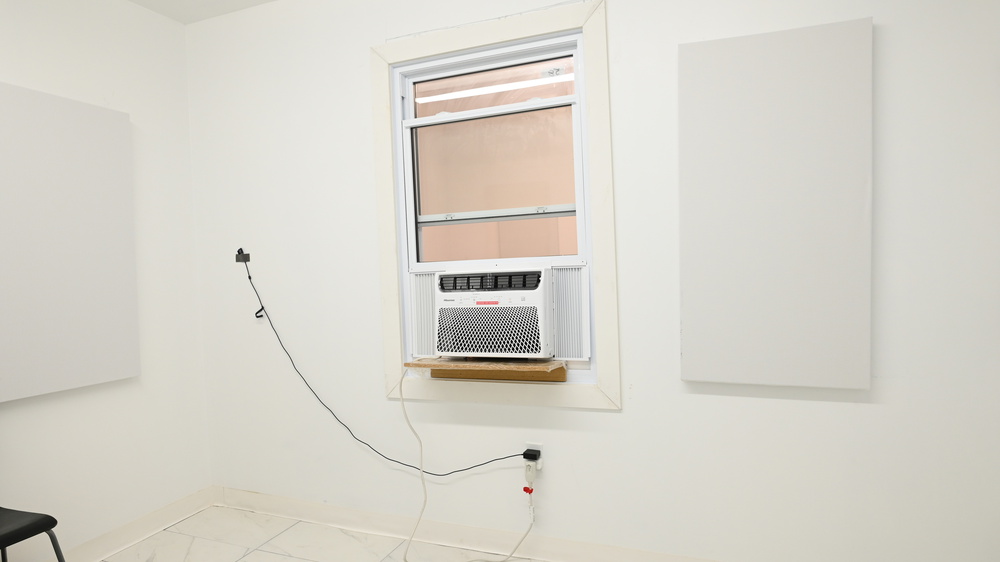
Our testing room has a volume of 26 m3 (representative of a small bedroom) with vapor barriers, double-insulated walls, and a triple-insulated floor and ceiling.
During our temperature maintenance test, we ran a 1,700 BTU/h (500W) space heater throughout the test to simulate a constant source of heat that is usually present in real life. In addition, we estimated the thermal leakage of the testing room to be very similar at around 1,800 BTU/h. This means we needed to exchange around 3,500 BTU of energy every hour to keep the temperature at 21 °C. Since this is less than the lowest capacity A/C we've tested, even a 5,000 BTU/h A/C unit had to cycle off its compressor to maintain this temperature.
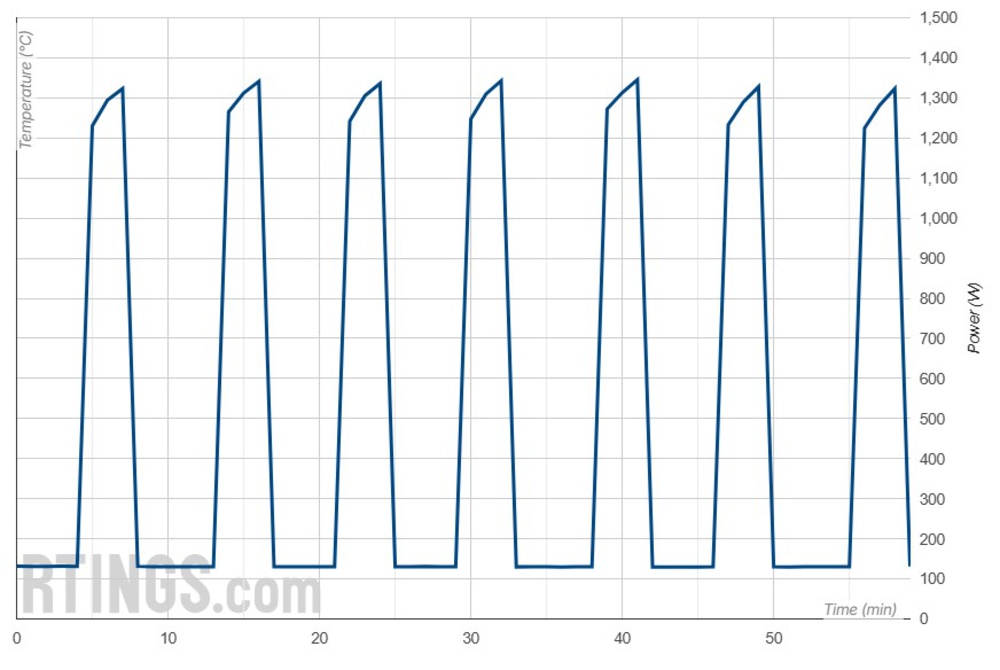
The graph above shows that the 14,000 BTU/h Hisense AW1422CW1W needs to cycle off its compressor so frequently that it can barely ramp up before it cycles off again. This, in turn, leads to lower efficiency numbers because every time the compressor cycles off, humidity is released back into the room's air, which is removed again when the compressor kicks in.
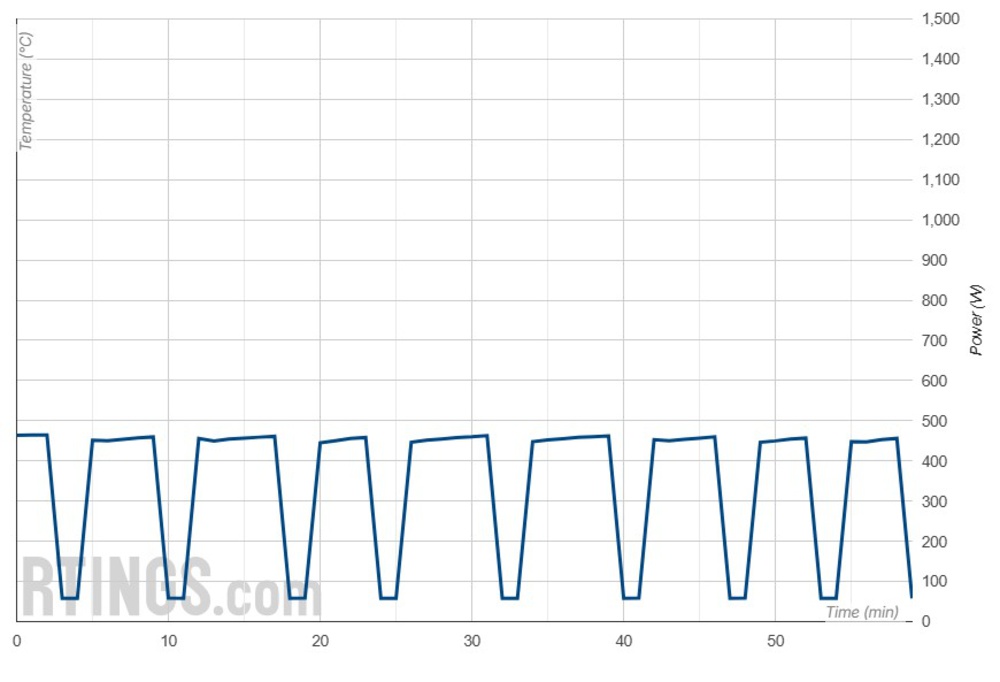
In the case of the Frigidaire FFRA051WAE, which is rated at 5,000 BTU/h, the compressor cycles off for less than two minutes before it kicks back in. This means that the compressor is on most of the time, which helps the A/C function more efficiently.
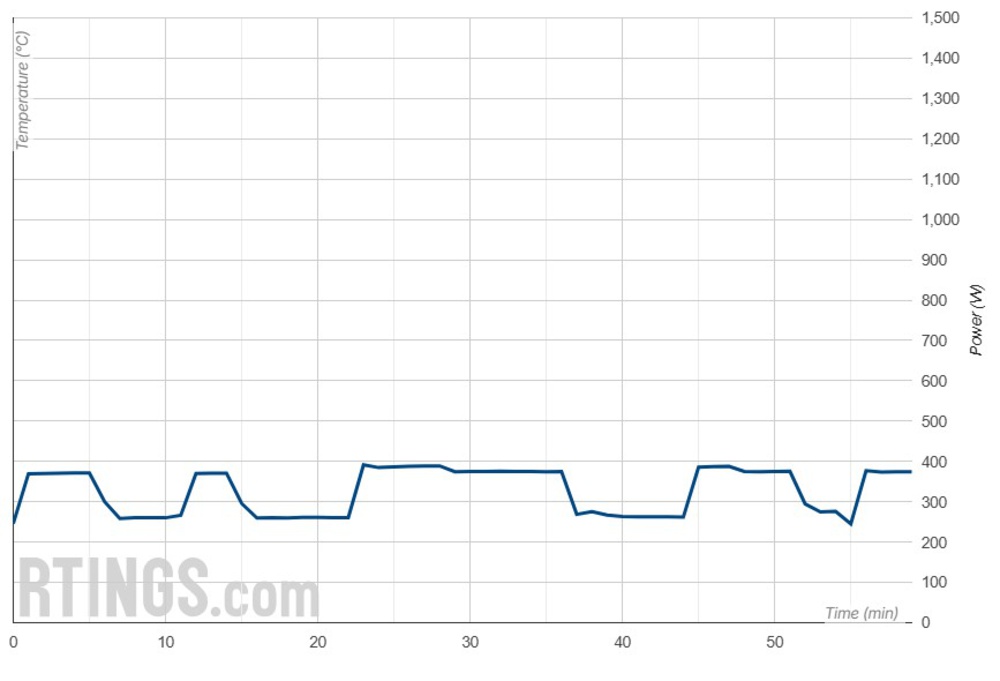
The power consumption of the 12,000 BTU/h Midea U-Shaped MAW12V1QWT suggests that this A/C utilizes inverter technology. The compressor modulates its consumption between 380W and 270W instead of cycling off and on.
One of the main factors why an inverter A/C can be so efficient, even when it's clearly oversized for the room, is its ability to modulate the compressor speed without turning it off completely. Every time the compressor turns off, the pressure between the condenser and evaporator circuits starts to equalize. This means that every time the compressor kicks back in, wasted energy goes into repressurizing the refrigerant before it can start to exchange energy again.
Higher comfort levels come from stable humidity and stable temperature
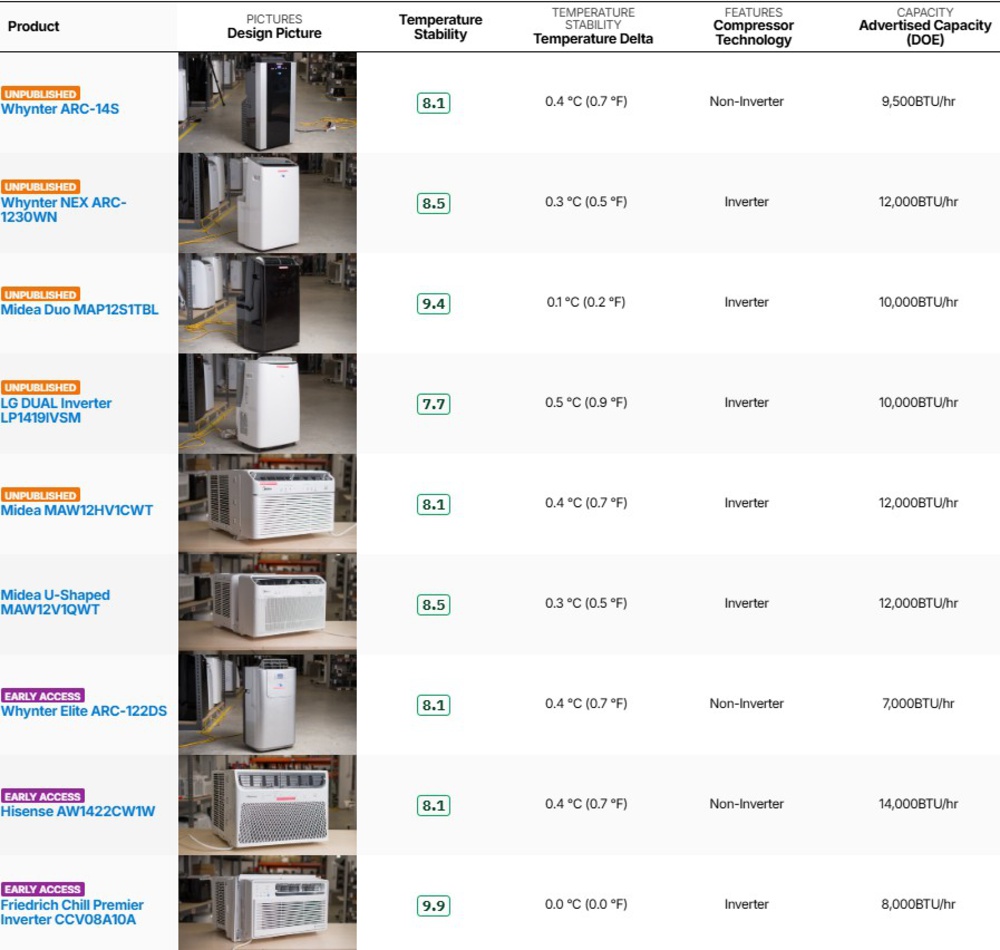
The table above shows that most of the A/Cs we've tested can maintain temperature quite well. Even the significantly oversized, non-inverter Hisense 14,000 BTU/h window A/C managed to maintain a 0.4 °C temperature delta throughout the test.
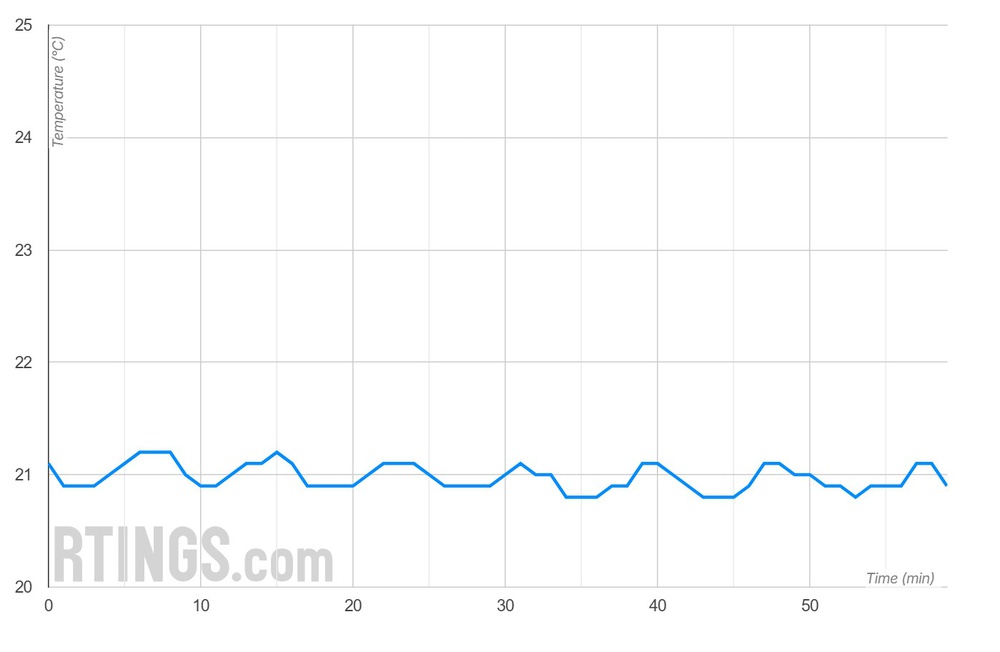
The reason is that even in small rooms, the air's thermal inertia is enough to maintain stable levels when the compressor cycles off and on. However, this is not the case for humidity.
Humidity is much easier to change since it relies on the vapor pressure difference. There is practically no inertia in this scenario. Vapor pressure will immediately start to equalize whenever the A/C's compressor turns off.
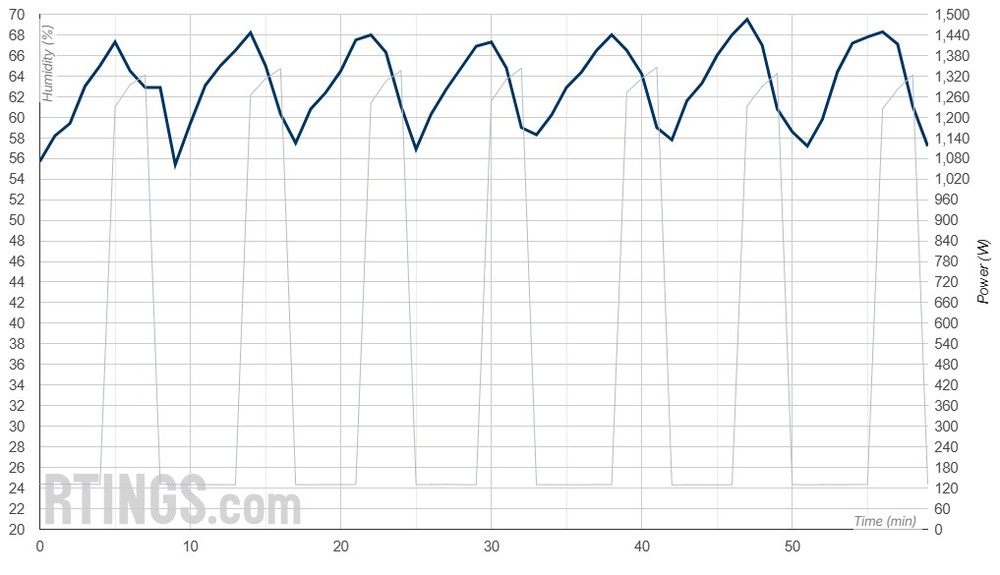
If we look again at the performance of the Hisense 14,000 BTU/h window A/C, we can clearly see how the humidity levels start to increase right after the compressor has cycled off. The humidity fluctuates by over 14%. The effect here is so pronounced because the evaporator coils are large. This means that more water condenses on these coils and more water will be released when the compressor cycles off. At the same time, the compressor spends most of the time in the off state, giving the evaporator coils more time to evaporate more water back into the room.
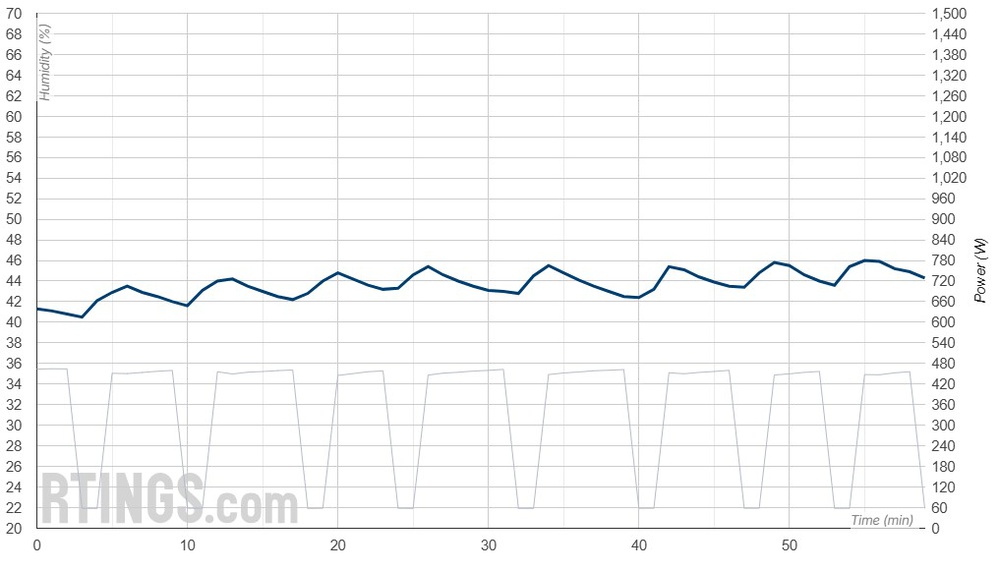
In the case of the Frigidaire FFRA051WAE 5,000 BTU/h window A/C, you can see a similar trend of humidity levels increasing after the compressor has cycled off, but to a much lesser degree, with only 5.5% fluctuation. This, of course, is because the compressor spends less time off, and the evaporator coils are much smaller than those in the Hisense.
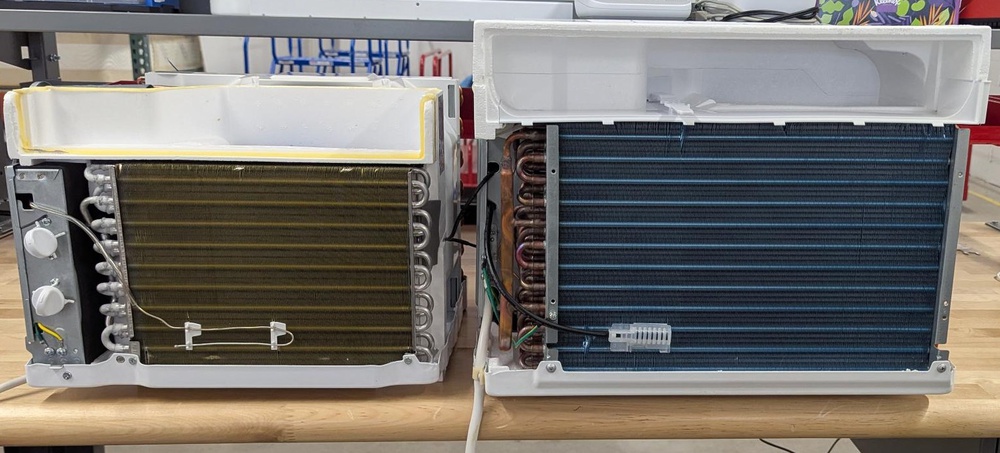
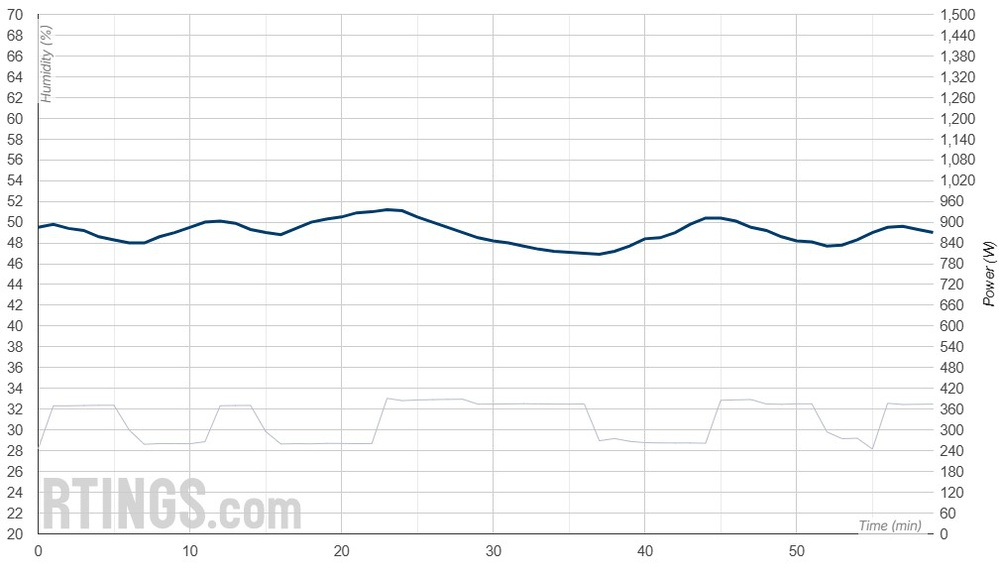
In the case of the Midea U-shaped 12,000 BTU/h window A/C, we see some minor fluctuations in humidity levels when the compressor modulates up or down. However, it's very clear that these fluctuation levels are comparable to and even lower than the Frigidaire's. This impressive stability is achieved even though the A/C is oversized for the room, thanks to inverter technology.
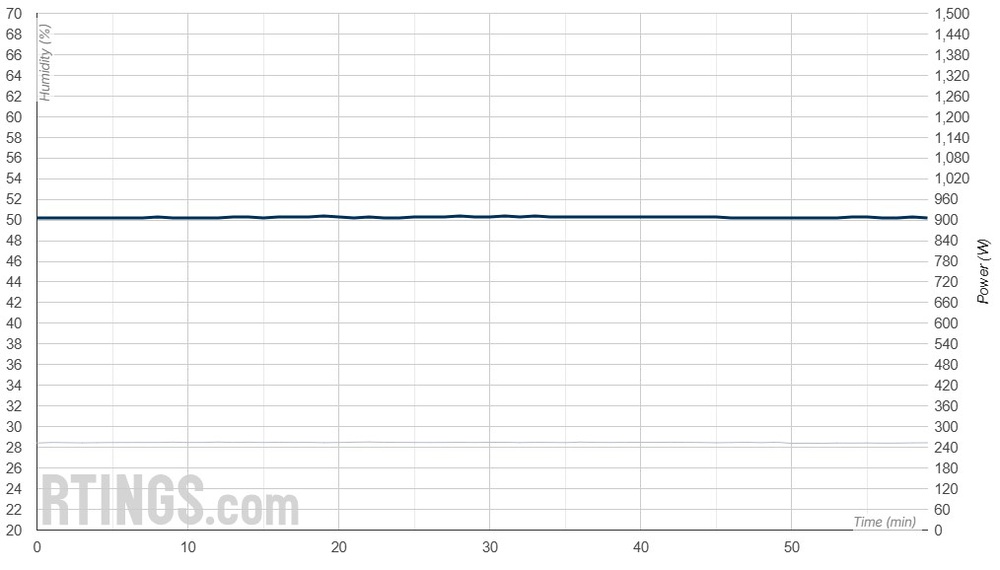
If we look at a less oversized inverter window A/C, like the Friedrich Chill Premier Inverter CCV08A10A shown in the graph above, it's clear that its humidity stability is even better than that of the Midea U.
The reason is that even an inverter A/C has its limits. Most of these A/Cs can only go down to no less than 25% to 30% of their rated capacity. As such, in our testing room, the 12,000 BTU/h Midea U was operating at its lowest band, and the designed hysteresis in that band was so narrow that the compressor couldn't keep one stable level throughout the test. As such, even an inverter A/C can be oversized in extreme situations.
Conclusion
Variable speed compressor technology has matured over the years. Properly sizing your A/C for a specific room is no longer that important. However, inverter A/Cs still have their limits, so greatly oversizing an inverter A/C might still have some negative effects.
If you are in the market for a new seasonal A/C, getting an A/C with an inverter would be the right choice for higher efficiency, quieter operation, and higher comfort levels for pretty much any room size.